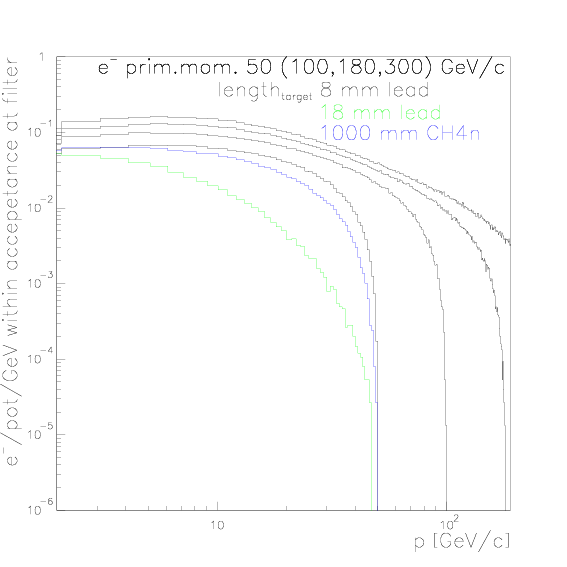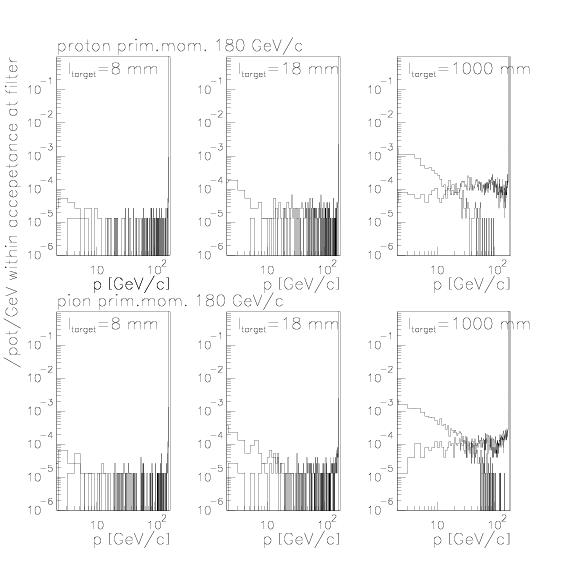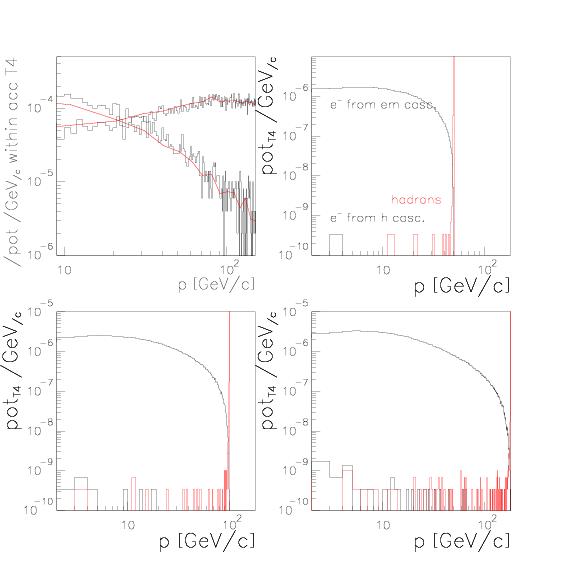Filter Target
The filter target is a secondary target in the H8 beam line, located in the first focal point after the lower main bend (B1-2). Currently it is equipped with an empty position and another three targets: 8 mm lead, 18 mm lead and 1000 mm Polyethylene. The secondary beam has a spot size of 3 mm by 3 mm, where the acceptance after the target is given by 2 mm/1mrad in the horizontal and 40 mm/0.5 mrad in the vertical plane. The effective vertical acceptance is given by the acceptance collimator C3.
The filter target serves to produce a 'pure' lepton beam or hadron beam. A short target like the lead ones will initiate only an electromagnetic shower, caused by the incident beam of all particle kinds. The resulting momentum spectrum of primary hadrons is unchanged, where the leptons have a continuous momentum spectrum smaller than the primary one. Using the upper main bends B3-4 one chooses a momentum smaller than the primary one and only leptons will be transported further correctly. Hadron background is finally smaller than 1%, choosing low energies, even below 0.1 %. Using the polyethylene target the secondary electron beam is tending towards zero yield at primary beam momentum, whereas the pion yield is still remarkable at primary momentum, a pure hadron beam can be produced. Filtering the electrons is usually done by introducing the absorber, which is placed next to the upper vertical bend.
electron production from electron beam
About 0.1 % of the primary electron beam produce secondary electrons within acceptance. Preferred target from the choice mentioned above is lead 8mm at highest possible, primary momentum (see Figure below). The electron yield for the longer lead target and the polyethylene target are relatively similar at all three primary momenta. Useful secondary momenta are up to 50 GeV/c, where highest is favorable concerning the error on the bending magnets.

hadronic cascade
The hadron and electron yield from a primary hadron beam at different momenta and the three filter configurations is shown in the Figure below. Shows similar production for pions and protons and at the same time the favorable lepton/hadron ratio of secondaries for shorter target length. Hadronic and em yield are at least three orders below the one of electron initiated hadronic em shower for the lead targets, which are favoured due the absolute yield. Increasing the secondary momentum from T4 to filter beyond 180 GeV/c does not make sense, as the gain in electron yield is smaller than the one for hadrons.

total eh yield after Filter as a function of primary proton on T4
The convolution of the production yield of T4 target with the one of the filter (8 mm lead) shows the following picture of the total yield. Electron yield is the summary of secondaries from the em and the hadronic cascade, whereas the electron yield of the hadronic cascade is four orders of magnitude lower. The muon background is zero, as pion decay produces only muons at >50% pion momentum and the reasonable electron momentum after filter is below 50 GeV/c for a pion momentum of 180 GeV/c.

The estimation of the rate further downstream can be estimated using the transfer rates given in the previous chapter as the beam optic settings will not be changed. The acceptance of the beam line after the filter is the same as without filter. All beam elements after the filter are adjusted to the tertiary momentum including Q7, which is placed on either side of the filter.

